How often do you spend your dive looking at, or searching for coral? Coral reefs are the foundation of the marine environment but often get overlooked for flashy fish, tiny critters or charismatic megafauna.
Coral reefs are tremendously important and are often the reason people first get involved in scuba diving. But ask any diver to name a handful of species, and chances are you will be met with blank stairs.
Corals come in all shapes, sizes, colors, and unique growth forms, all within the same species. Each individual colony is influenced by the depth at which it is growing, and if it is found in the current or living in a low flow environment. This means no two colonies are alike.
Once your train your eyes to start looking at the reef, a whole new world of scuba diving adventures unfolds. We’ve put together this list of 5 corals to get you started. Each of these corals are easy to identify and common throughout the Caribbean.
GREAT STAR CORAL – Montastrea cavernosa
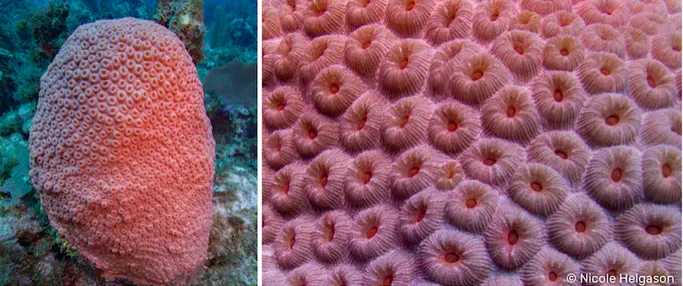
Monstastrea cavernosa has to be one of my all time favorite corals. Colonies of Montastrea grow into massive boulders over 5 feet (1.5m) in diameter, or encrusting plates growing on the side of rocks on along the sea floor.
Montastrea has dome shaped corallites which can be the same color as the coral colony or have a contrasting color around the corallite rim. During the day the polyps are retracted inside the corallite and extend tiny flower like polyps at night. At night, this coral like most corals will feed on zooplankton and phytoplankton drifting past in the water column.
Montastrea comes is a variety of colors from gray, brown, green and yellow to striking pinks and orange. We’ve yet to come across a colorful colony of Montastrea with contrasting colors on the corallite rim, so keep your eyes peeled for this rare color pattern.
MOUNTAINOUS STAR CORAL – Orbicella faveolata
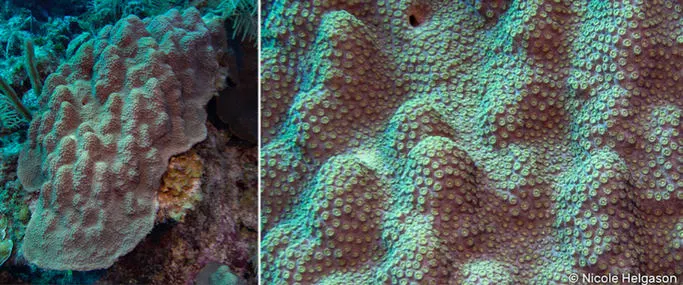
There are three species of Orbicella corals found in the Caribbean. Orbicella colonies often dominate the reefscape and make up a considerable total of Caribbean reef building corals. You are sure to find this coral wherever you dive.
Orbicella corals, have small corallites which extend above the surface of the coral. Orbicella faveolata grows into large mountainous colonies with characteristic ridges, lumps, or lobes running down the side of the coral.
The other two species of Orbicella, (O. annularis and O. franksi) grows into columns or have rough uneven surface. If it’s your first time identifying corals, don’t get to caught up in trying to differentiate between the three species. Instead get a closer look at the corallites and first learn to identify Orbicella.
Once you’ve got that down you can start telling the difference between the species.
MUSTARD HILL CORAL – Porites asteroides
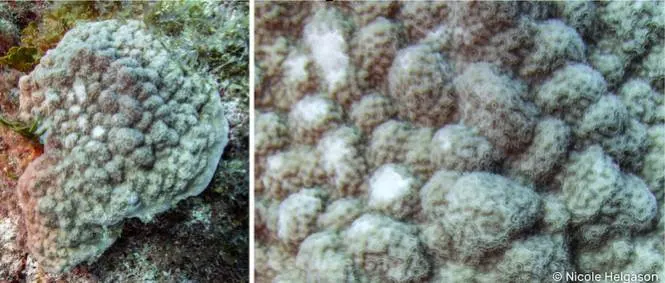
Porites asteroides is a bumpy coral which you can find throughout the Caribbean. Porites species of coral have small corallites embedded surface of the colony giving the coral a porous look. Porites should not be confused with Orbicella. Although the two coral have a similar colony shape, upon closer inspection you can see that corallite structure is very different.
Porites asteroides is a good example how colonies can be influenced by their depth. When you find this coral in shallow water it will has a round dome shape. Colonies growing in deeper grow into plates or encrust along the rocks. The deeper you go the less light becomes available for corals to photosynthesize. Corals will encrust or spreading along the rock out to catch more light.
GROOVED BRAIN CORAL Diploria labyrinthiformis
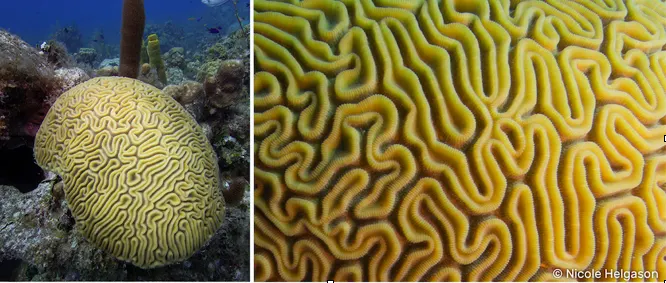
Diploria labyrinthiformis is perhaps the most recognizable of the three species of Diploria. The grooved brain coral grows into large circular colonies and has wide valleys that twist and turn their way throughout the colony. The valleys have a groove in the center which varies greatly in width and depth between colonies. Coral polyps can be seen in the deep narrow valleys between the grooved ridges.
These grooved ridges are easy to recognize underwater and indicate the coral is a Diploria labyrinthiformis. This coral is found in yellow, brown, tan, and gray, and are commonly found while diving between 5 and 90 feet (1-30m).
MASSIVE STARLET CORAL – Siderastrea siderea
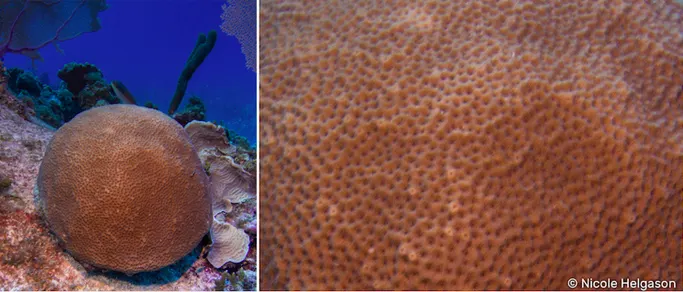
Siderastrea siderea is an unassuming coral which most diver will mistake as rock. The surface of the coral has small dimpled corallites and the colonies forms into large boulders on the sea floor. Smaller colonies can also be encrusting onto rocks.
Siderastrea siderea is generally reddish brown but can also be found in beautiful pinks. This species can be confused with the closely related lesser starlet coral (Siderastrea radians) however the massive starlet coral (Siderastrea siderea) has smaller corallites.
This species occurs in all types of reef environments from the shallow subtidal to 70 m depth and is most common at 5-15 m depth. This species does well in areas with high sedimentation and high turbidity.
Take some time to memorize at least one of these coral before your next Caribbean dive. Unlike fish which amongst the same species will general look identical, you never know how corals will look. Each coral colony is unique which make looking for coral an exciting dive adventure.
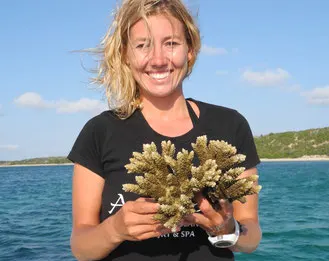
About the Author
Nicole Helgason is a PADI Dive Instructor and has taught scuba diving in Canada, Dominican Republic, Indonesia, and has managed dive centers in Mozambique and Baja, Mexico. Nicole has a Bachelors degree in Coastal Geography from the University of Victoria and is the founder of ReefDivers.io a blog dedicated to scuba diving and coral reefs. Follow her on Instagram here.

